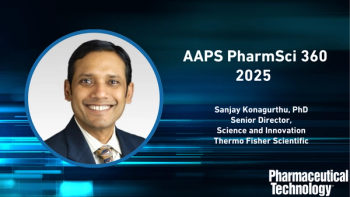
- Pharmaceutical Technology-09-01-2016
- Volume 2016 Supplement
- Issue 3
A Novel Solid-Dose Injection
A study demonstrates the feasibility of a novel solid-dose formulation injection technology to effectively deliver a therapeutic treatment without the aid of a needle.
Needle-free injection technologies can improve patient experience and compliance with treatment, eliminate needlestick injury, and enable self-administration. Several needle-free technologies such as liquid jet and powder injectors have been developed, while future alternatives such as microneedle patches remain in development (1, 2).
This study investigates the use of a novel solid-dose formulation delivered as a whole entity into the skin, by a needle-free delivery method (Glide SDI, Glide Pharmaceutical Technologies). With the needle-free delivery method, the potential dose size available is greater than with microneedle patch delivery, and the entire dose is received each time. Solid-dose formulations also have the potential for increased stability of the API compared to liquid injections, reducing costs and inconvenience to the user.
One example of an extended release solid-dose injection is Zoladex (goserelin acetate), for the treatment of female infertility and some breast and prostate cancers. Zoladex, however, is administered by a healthcare professional via a needle. Due to the needle, minimal stress is applied to the solid dose during injection, but this device does not offer the benefits of needle-free technology. In a needle-free system, the solid dose requires significant mechanical strength to penetrate the skin, while maintaining the required drug release (immediate- or sustained-release) profile.
In this study, solid doses containing octreotide were injected into pigs and the subsequent pharmacokinetic release profiles measured. Octreotide is currently approved for the treatment of several serious disorders, including acromegaly and certain neuroendocrine tumours (3).
Materials and methods
Solid-dose injector. A solid-dose injector (SDI) system (Glide Pharmaceutical Technologies) was used to inject the solid doses. This system consists of a reusable spring-powered actuator and a disposable cassette containing the solid dose. Each cut dose consists of a rod of less than 1 mm diameter with a pointed V-shaped tip (Figure 1).
The cassette containing the dose connects to the actuator via a bayonet fitting. The actuator is then used to press the cassette against the injection site at 90 degrees, loading the actuator spring (Figure 2). Once a defined force is reached, the spring energy is released pushing the solid dose into the subcutaneous layer.
Solid-dose preparation. The solid doses were prepared by extruding a paste containing a mixture of stabilizing and bulking agents, all of which are generally regarded as safe (GRAS), and the API (100 µg/dose octreotide). The resulting extrudate was then dried and cut. The solid doses were visually inspected under magnification to check for defects prior to releasing for use.
The solid-dose formulations were loaded into disposable cassettes and sealed in foil pouches containing desiccant to prevent uptake of moisture. The active solid doses designated for use in the pharmacokinetic study were then e-beam sterilized (10-25 kGy).
Solid-dose preparation tests. The mechanical strength of the formulations was assessed by compressing 10 2-mm long rods on a materials tester (AGS-X, Shimadzu) at 0.5 mm/min until fracture.
The disintegration time was measured by removing a single sterilized solid dose from its packaging and cassette and placing it in a well with 200 µL of distilled water at room temperature.
Photographs were taken at regular intervals (approximately one a minute) until the solid dose had fully dissolved. This was repeated for a total of three different samples.
To test for content and purity, 10 samples were weighed and fully dissolved in 10 mL purified water (18 MΩ.cm) before being analyzed using high-performance liquid chromatography (HPLC).
For content uniformity, 10 samples doses were each dissolved in 1 mL 18 MΩ.cm before being analyzed individually. The acceptance value (AV) was then calculated in accordance with European Pharmacopoeia (Ph. Eur.) 2.9.40.
Porcine model. Reported models used in literature to determine skin and tissue penetration forces, include cadaver (2, 4), porcine, ovine (2), and murine (5, 6). Porcine skin is considered most comparable to human skin due to its anatomical and physiological similarity (7, 8). Some studies have compared the fundamental biomechanical properties of pig and human skin (9), and higher needle penetration forces have been measured into pig at superficial depths. Porcine skin is a standard model for skin penetration at various scales, from knife wounds (10) through to microneedle array design (11).
Pharmacokinetic study. Using a crossover design with a 12-day washout between doses, female Large White pigs (18 to 25 kg) received a subcutaneous dose (nominal) of either 100 μg octreotide (Sandostatin) as a liquid control or 100 μg octreotide Glide solid dose. Blood samples were taken at pre-dose and at the regular intervals post-dose.
The octreotide (100 μg/mL) comparator was injected using a 21-gauge needle at a 45-degree angle after ‘tenting’ skin. Both sets of treatment were subcutaneous at the inguinal site.
Blood samples were collected into tubes containing K2EDTA and Aprotonin (stabilizing agent) and frozen prior to analysis.
Porcine plasma samples were extracted and analyzed using the validated liquid chromatography-tandem mass spectrometry (LC-MS/MS) method.
Penetration study. One hundred injections were carried out with a placebo version of the formulation into the neck region of an anaesthetised female Large White pig (22.0 kg), which is understood to provide a tougher barrier to penetration than the inguinal. Where a small injection mark and no other debris was visible, the actuation was considered successful.
Results and discussion
Solid-dose preparation test data. The solid-dose preparation test data were:
Purity = 99.3%;
Nominal dose = 101.5%
Content uniformity (AV) = 6.6
Disintegration time = 840 s (standard deviation = 92 s)
Pharmacokinetic study compression strength = 135 MPa (standard deviation 13 MPa)
Penetration study placebo compression strength = 160 MPa (standard deviation 9 MPa)
Pharmacokinetic data. A paired t-test of Cmax, AUC0-t , and AUC0-4h values indicate no significant difference between the solid dose and octreotide reference treatments at α = 0.05 level. All dosed animals showed exposure to octreotide with no analyte measured in pre-dose samples.
The plasma concentration vs. time profiles were as expected for subcutaneous administration of octreotide, with the exception of female 4 following administration of octreotide. This individual demonstrated a higher Cmax of 12.9 ng/mL compared to an average of 8.16 ng/mL for the rest of the group. A shift in Tmax from 20 (median) to 5 min was also observed for this animal. These observations are consistent with part of the dose directly entering the systemic circulation rather than the intended subcutaneous route. Female 4 octreotide treatment was included in all tables and figures.
Both the individual and mean (see Figure 3) pharmacokinetic profiles for the solid-dose formulation and octreotide reference treatments were similar, with the solid-dose treatment exhibiting a delay in Tmax (53 minutes compared to 20 minutes for octreotide). The solid-dose formulation was not optimized for a rapid release profile as one was not required for this treatment. To achieve a faster release profile, a modified formulation would be required.
Based on nominal 100-μg doses and AUC0-t values, the needle-free delivery method treatment demonstrated a relative bioavailability of 93.7% and 94.3% when compared to the octreotide reference, including and excluding individual 4, respectively. Overall, the exposure based on area under the curve (AUC) values, half-life, and clearance parameters were comparable between time points.
Penetration study. All 100 of the penetration tests were successful with no debris visible after injection, which is consistent with the dose being fully delivered under the skin.
Conclusion
Analysis of Cmax, AUC0-t , and AUC0-4h values indicated no significant difference (α < 0.05) between the solid-dose formulation delivered by the needle-free delivery method and the octreotide reference treatment. This verifies that the needle-free delivery method delivers the dose to the target site and that the pharmacokinetic parameters relevant for bioequivalence in the clinic are comparable between formulations.
There was a delay in median Tmax (53 min compared to 20 mins for octreotide), but this should not alter the efficacy or safety of the treatment for non-emergency treatments such as octreotide. If a more rapid release rate is required, the formulation characteristics would require optimization for this.
The data gathered demonstrate the potential for an effective solid-dose formulation treatment to be delivered subcutaneously without the aid of a needle. The next phase of development is a safety and pharmacokinetic study using the needle-free delivery method and octreotide solid-dose formulation in human volunteers.
Ethics
The in-vivo tests were performed by Quotient Bioresearch Ltd. (Rushden, Northants) in accordance with its Ethical Review Process (ERP) as detailed within the Animals (Scientific Procedures) Act 1986.
Disclosure
The study was funded and sponsored by Glide Pharmaceutical Technologies Ltd. D. Grant, D. Smith, and I. Collis are employees of Glide, and J. Sharman was an employee at the time of this study. A. Lyness completed his doctorate with Glide. S. Constable is an employee of Quotient Bioresearch (Rushden) Ltd who were contracted by Glide to conduct the in-vivo studies.
Acknowledgements
The authors would like to acknowledge Quotient Bioresearch Ltd for support of the in-vivo trials and LGC Ltd which conducted the pharmacokinetic sample analysis.
References
1. Y.-C. Kim, J.-H. Park, and M.R. Prausnitz, Adv. Drug Deliv. Rev. 64, 1547-1568 (2012).
2. P.N. Brett, et al., Proc Inst Mech Eng H 211, 335-347 (1997).
3. A. Rinke, et al., J. Clin. Oncol. 27, 4656-4663 (2009).
4. T.B. Frick, et al., J. Biomech. 34, 1335-1340 (2001).
5. M. L. Crichton, et al., Biomaterials 32, 4670-4681 (2011).
6. M. L. Crichton, et al., Biomaterials 34, 2087-2097 (2013).
7. N. J. Vardaxis, et al., J Anat 190, 601-611 (1997).
8. T. P. Sullivan, et al., Wound Rep Reg 9, 66-76 (2001).
9. J. Jachowicz, R. McMullen, and D. Prettypaul, Skin Res. Technol. 13, 299-309 (2007).
10. S. Jones, L. Nokes, and S. Leadbeatter, Forensic Sci. Int. 59-63 (1994).
11. K. Cheung, T. Han, and D.B. Das, J Diabetes Sci Technol. 8, 444-452 (2014). PT
About the Authors
David Grant is technical lead, new technologies, david.grant@glide-technologies.com; David Smith is CMO manager; and Imogen Collins is chief scientific officer, all at Glide Pharmaceutical Technologies Ltd., Abingdon, UK; Johannah Sharman was pre-clinical manager at Glide Technologies during the study and is currently regulatory affairs manager at Kalvista Pharmaceuticals Ltd. Alex Lyness is an enterprise fellow at Loughborough University, Healthcare Engineering Group, Centre for Biological Engineering, Wolfson School of Mechanical and Manufacturing Engineering, Loughborough University, Leicestershire, UK. Scott Constable is principal project co-ordinator, Quotient Metabolism at Quotient Bioresearch (Rushden) Ltd., Northamptonshire, UK.
Article Details
Pharmaceutical Technology
Vol. 40
APIs, Excipients, and Manufacturing Supplement
September 2016
Pages: s36-s38
Citation
When referring to this article, please cite it as D. Grant et al., "A Novel Solid-Dose Injection," APIs, Excipients, and Manufacturing Supplement to Pharmaceutical Technology 40, 2016.
Articles in this issue
over 9 years ago
Determining Minimum Batch Sizeover 9 years ago
Optimizing API Manufacturingover 9 years ago
Dealing With Complexity in Excipients and Formulationsover 9 years ago
Data Integrity Emerges as an Excipients Issueover 9 years ago
Contract Service Providers Tackle Biopharma Challengesover 9 years ago
Topical Formulation: Moving From Art to ScienceNewsletter
Get the essential updates shaping the future of pharma manufacturing and compliance—subscribe today to Pharmaceutical Technology and never miss a breakthrough.




